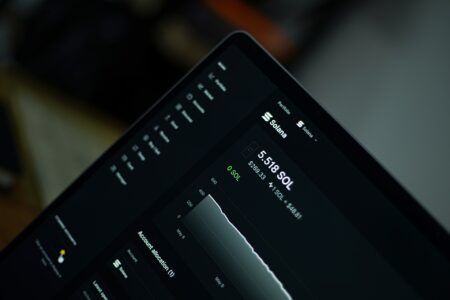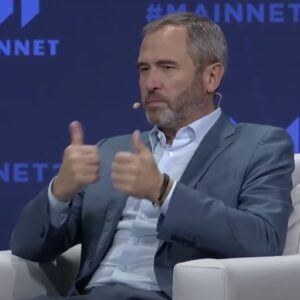The TRON Foundation officially introduced the Sun Network, a second-layer scalability solution for Tron (TRX), one of the largest platforms for deploying decentralized applications (dApps), on April 8th, 2019.
The Sun Network aims to “incorporate a series of scaling projects” including sidechains for smart contract application development and “cross-chain communication,” which has been designed to “further expand the overall capacity,” or throughput, of the TRON blockchain network.
This, according to a blog post published on April 24th, 2019 by the TRON Foundation, which revealed that the Sun Network will help “improve the transactions per second (TPS) rate and smart contract execution efficiency” on the TRON platform.
DAppChain, Tron’s Main “Sidechain Scaling Project”
The post added that “among the projects, DAppChain is a sidechain scaling project designed for TRON’s smart contracts.” The DAppChain is being developed in order to significantly “increase the capacity” or TPS rate of Tron-based DApps, while also “realizing [the] on-chain operation of DApps with low energy consumption.”
Moreover, TRON’s DAppChain project aims to “enhance security and efficiency via customizable methods,” the Foundation’s blog post explained. The first phase of the DAppChain project is scheduled to begin “on May 30, 2019,” the blog mentioned.
Commenting on the basic idea behind the Tron network scaling solution, Marcus Zhao, confirmed:
[The] Sun Network is a TRON scaling solution, incorporating a series of scaling projects such as sidechain and cross-chain communication [protocols]; DAppChain is part of the TRON side chain solution. Other details of the side chain solution will be announced later.
Zhao also claimed that Tron’s TPS rate is “considered very high compared to Ethereum.” He added that the fast-paced development of the Tron DApp ecosystem makes it is “necessary to continue to expand the TPS of the smart contract transactions on TRON.” He explained that this ensures that “the DApp ecosystem [will continue to] attract more developers” and users.
According to Zhao: “The overall technical architecture of DAppChain is the decentralized chain guaranteed” by the delegated proof-of-stake (DPoS) consensus protocol.” When “compared to other scaling solutions,” Zhao believes the DAppChain is a better alternative as it “supports smart contract transactions and focuses on improving the TPS of the smart contract transactions on the mainnet” itself.
He also thinks that the DAppChain implementation will help to “lower the transaction fees” and that the sidechain would be able to “support more customizable requirements.” Zhao further noted that “major dApp vendor alliances can [also] customize some of the sidehain properties based on their own characteristics,” including creating various “sidechain incentives, transaction rates, block generation speed, and transaction confirmation speed.”
“Biggest Advantage Of DAppChain” for Developers
As Zhao explained:
The biggest advantage of DAppChain for dApp developers is that the Energy fee is very low; the confirmation time of the sidechain transaction can be shortened, thus speeding up the game and supporting more game genres. These advantages are mainly realized by sidechain’s support for smart contracts and the customizable features of side chain.
He continued:
DAppChain interacts with the main chain through a smart contract which defines a series of standard interfaces, allowing main chain to mirror assets such as TRX, TRC10 and TRC21 on the side chain and withdraw the assets to the main chain, etc. An essential principle is that all the valid assets on the side chain must come from the main chain, ensuring that the side chain is an extension of the main chain, instead of a hard fork.
How DAppChain Will Be Implemented
In the first stage of its implementation, the DAppChain will “adopt the DPoS mechanism of side chain to ensure the consensus and correctness of sidechain transactions themselves,” Zhao noted. He also stated that smart contracts would be used “on the main chain and sidechain” to ensure that “assets on the sidechain are safe” and users are able to make withdrawals without any problems.
Zhao also clarified that the MainNet will be able to “support the launch of many sidechains instances simultaneously, and the transaction pressure between different instances will not be transmitted to each other.” This, Zhao explained, would ensure that the “transaction pressure of the sidechain” will not negatively impact the MainNet’s performance. Because of this optimization, Zhao noted that the “transaction cost on DAppChain” can be reduced significantly.
He explained that “if one sidechain is nearly congested, [users would] just need to transfer excess transactions to other sidechains.”
Zhao believes:
The key to [properly implementing] a DAppChain is the single connection of smart contract between the side chain and the MainNet. Smart contracts on the MainNet are responsible for the entrance and exit of assets on the sidechain. Whereas the sidechain is responsible for the consensus of transaction details.
He further noted:
DAppChain is an important guarantee for TRON to take the quality and quantity of its DApps to the next level, laying the foundation for a more prosperous ecosystem of TRON. Each DAppChain can be a micro-ecosystem itself, constituting the entire ecosystem when brought together.









